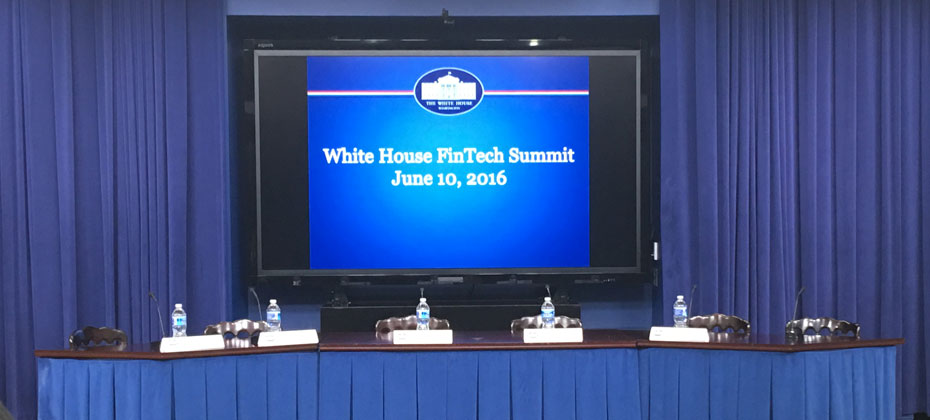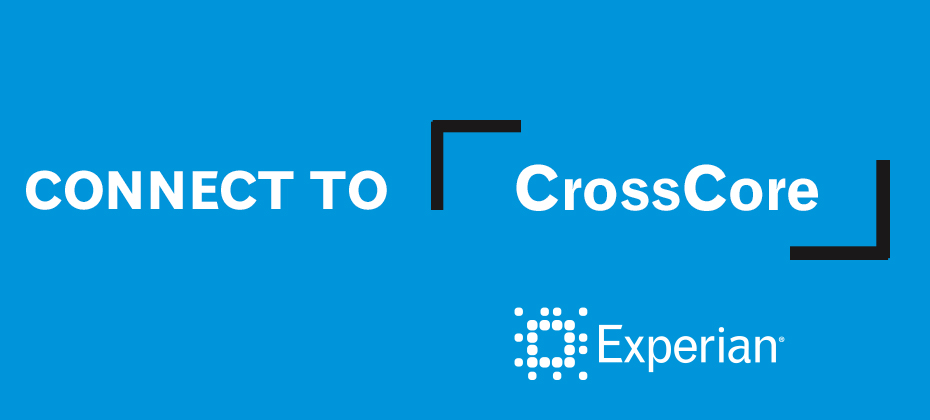Industries

Is the speed of fraud threatening your business? Like many other fraud and compliance teams, your teams may be struggling to keep up with new business dynamics. The following trends are changing the way consumers do business with you: 35 percent year-over-year growth in mobile commerce More than $27 billion forecasted value of mobile payment transactions in 2016 45 percent of smartphone owners using a mobile device to make a purchase every month More than 1 billion mobile phone owners will use their devices for banking purposes by the end of 2015 In an attempt to stay ahead of fraud, systems have become more complex, more expensive and even more difficult to manage, leading to more friction for your customers. How extensive is this impact? 30 percent of online customers are interrupted to catch one fraudulent attempt One in 10 new applicants may be an imposter using breached data $40 billion of legitimate customer sales are declined annually because of tight rules, processes, etc. This rapid growth only reinforces the need for aggressive fraud prevention strategies and adoption of new technologies to prepare for the latest emerging cybersecurity threats. Businesses must continue their efforts to protect all parties’ interests. Fraudsters have what they need to be flexible and quick. So why shouldn’t businesses? Introducing CrossCore™, the first smart plug-and-play platform for fraud and identity services. CrossCore uses a single access point to integrate technology from different providers to address different dangers. When all your fraud and identity solutions work together through a single application program interface, you reduce friction and false positives — meaning more growth for your business. View our recent infographic on global fraud trends

What you give, you get. At least that is what popular philosophers claim. And if you think about it, this statement is also applicable to the world of data accuracy. As organizations of all sizes increasingly rely on data to interact with customers and create insights to drive strategy, it’s no secret bad data can quickly lead a company or financial institution down the wrong path, even landing them into regulatory troubles. A recent Experian Data Quality study found: Seventy-five percent of organizations believe inaccurate data is undermining their ability to provide an excellent customer experience. Sixty-five percent of organizations wait until there are specific issues with their data before they address and fix them. Fifty-six percent of organizations believe mistakes can be attributed to human error. For years, organizations have wanted good data simply for operational efficiencies and cost savings, but now a shift has taken place where businesses are using data for nearly every aspect of their organization. The majority of sales decisions are expected to be driven by customer data by 2020, with companies determined to turn data into actionable insight to find new customers, increase customer retention, better understand their needs, and increase the value of each customer. Additionally, the Fair Credit Reporting Act (FCRA) requires those contributing data to provide accurate and complete information to the credit reporting agencies. If they fail to meet accuracy obligations when reporting negative account histories to credit reporting companies, the result could be bureau action and fines. Organizations still deal with a high degree of inaccurate data because there are a number of challenges to maintaining it. Some of them are external forces, but many are internal challenges – most notably a reliance on reactive data management strategies. The biggest problem organizations face around data management today actually comes from within. Businesses get in their own way by refusing to create a culture around data and not prioritizing the proper funding and staffing for data management. Many businesses know they need to improve their data quality, but often have a hard time defining why an investment is needed in the current structure. Solutions exist to get in front of data accuracy challenges. DataArc 360 Powered by Experian Pandora, for example, is designed to check the consumer credit information provided by data furnishers prior to submission to credit bureaus. This allows data suppliers to take more of a proactive approach to ensuring the accuracy of information, that may result in fewer credit disputes and a more positive interaction between consumers and their credit. Creating a clear governance plan, and centralizing data management policies and policies can also clean up internal challenges and improve accuracy standards. The importance of data cannot be neglected, but again, the data has to be clean for it to matter. What you give is what you’ll get.

Experian cited in Mobile Fraud Management Solutions report from Forrester as having the most capabilities and one of the highest estimated revenues in total fraud management

Experian consultant offers his recap from attending a half-day event hosted at The White House called the “FinTech Summit” largely focused on how government agencies can tap into the innovation, in which new firms are offering small-business owners and consumers faster forms of loans and digital payments. Federal regulators have been studying the industry to determine how it can be regulated while still encouraging innovation.

Part four in our series on Insights from Vision 2016 fraud and identity track It was a true honor to present alongside Experian fraud consultant Chris Danese and Barbara Simcox of Turnkey Risk Solutions in the synthetic and first-party fraud session at Vision 2016. Chris and Barbara, two individuals who have been fighting fraud for more than 25 years, kicked off the session with their definition of first-party versus third-party fraud trends and shared an actual case study of a first-party fraud scheme. The combination of the qualitative case study overlaid with quantitative data mining and link analysis debunked many myths surrounding the identification of first-party fraud and emphasized best practices for confidently differentiating first-party, first-pay-default and synthetic fraud schemes. Following these two passionate fraud fighters was a bit intimidating, but I was excited to discuss the different attributes included in first-party fraud models and how they can be impacted by the types of data going into the specific model. There were two big “takeaways” from this session for me and many others in the room. First, it is essential to use the correct analytical tools to find and manage true first-party fraud risk successfully. Using a credit score to identify true fraud risk categorically underperforms. BustOut ScoreSM or other fraud risk scores have a much higher ability to assess true fraud risk. Second is the need to for a uniform first-party fraud bust-out definition so information can be better shared. By the end of the session, I was struck by how much diversity there is among institutions and their approach to combating fraud. From capturing losses to working cases, the approaches were as unique as the individuals in attendance This session was both educational and inspirational. I am optimistic about the future and look forward to seeing how our clients continue to fight first-party fraud.

As net interest margins tighten and commercial real estate concentrations begin to slowly creep back to 2008 levels, financial institutions should consider looking to their branch networks to drive earnings. Why wouldn’t you, right? The good news is branch networks can embrace that challenge by simply using some of the tools they already have access to – most notably the credit report. Credit reports are generally seen as a tool to assist financial institutions in assessing credit risk. However, if used properly, credit reports can provide a wealth of insight on selling opportunities as well. Typically when a customer’s credit report is pulled, the personal banker or customer service representative is primarily focused on whether or not a loan application is approved based on the institution’s approval parameters. Instead, what if a lender elected to view this customer interaction as an opportunity to deepen the relationship? So, here are three ways to utilize credit reports to generate earnings through retail loan growth: 1. Opportunities to Consolidate Debt Looking for debt consolidation opportunities is probably the simplest way to mine for opportunities. For example: Personal Banker: “It looks like you also have a card credit with XYZ and ABC Bank. Based on your application, we can consolidate both of those balances into one and give you a lower interest rate.” Be specific. Tell the customer exactly how much money per month they would be able to save and the benefits of consolidation. Not to mention, debt consolidation often reduces a lender’s credit risk and enhances customer loyalty, so this is a win for the institution as well. 2. Opportunities to Provide Additional Credit Another method would be to “soft pull” a segment of your portfolio to identify customers who qualify for larger credit card balances or refinance opportunities. This strategy is best executed at the portfolio management level, as insight is needed on the bank risk appetite and concentration levels. Layering on a basic prescreen helps qualify and segment your prospect list according to your unique credit criteria. You can also expand the universe with an Experian extract list, identifying new consumers who might be open to new offers. 3. Find Hidden Opportunities Credit scoring models are not perfect. There are times when a person’s credit score does not reflect an applicant’s true risk profile. For example, a person who was temporarily out of work may have missed two to three payments during that period. A deeper scan of the credit report during underwriting may reveal an opportunity to lend to a person rebounding from financial difficulties not yet reflected by their credit score. For example, this individual may have missed two credit card payments but hasn’t missed a mortgage or car payment in 20 years. A score is just one dimension to the story, but trended insights can shine a light on who best to lend to in the future. Conclusion: With the proper tools and training, your retail team can get more out of the basic credit report and find additional opportunities to deepen customer relationships while maintaining your desired risk profile. The credit report can be a workhorse for your team, so why not leverage it for more business. Note: The information above outlines several uses for a credit report. Separate credit reports are required for each use with the intended permissible purpose. Ancin Cooley is principal with Synergy Bank Consulting, a national credit risk management and strategic planning firm. Synergy provides a rangeof risk management services to financial institutions, which include loan reviews, IT audits, internal audits, and regulatory compliance reviews. As principal, Ancin manages a growing portfolio of clients throughout the United States.

It’s more than mercury that will be up this summer. As temperatures climb, so do automotive sales, which often reach annual highs during the warmest months of the year. Fueled by pent-up demand coming out of the recession, historically low interest rates, and increased competition among both manufacturers and lenders, auto sales are continuing to be a bright spot in the U.S. economy. Summer sales spike According to recent research by Experian Automotive, 2015 sales of new non-luxury vehicles began rising in May and peaked in August at nearly 20 percent above the monthly average for the year. It is not surprising, given the number of notable manufacturer marketing campaigns that often air through the summer months, beginning with Memorial Day and running all the way through Labor Day weekend. The projection is that this trend will continue in 2016. Financing moves metal Financing continues to play an important role in facilitating new car sales. Experian research shows a consistent increase in the percentage of new vehicles sold with financing with the trend reaching a period high of 85.9 percent in Q4 2015, a 2.3 percent increase over the previous year. The increased financing, is due in part, to continued post-recession liquidity. As the economy has rebounded, lenders have re-emerged with attractive financing rates for buyers. In addition, captive lenders are continuing to support manufacturers with 0 percent subvention offers to increase sales. Total loan value is on the rise as well, reaching $29,551 in Q4 2015, a 4.1 percent increase over the previous year. Average MSRP is trending up too, but at a slower year-over-year rate of 3.6 percent. The slower growth in MSRP relative to total loan value is leading to increased loan-to-value ratios which reached 109.4 percent in Q4 2015. The increases in loan value and MSRP are putting pressure on monthly payment with average new vehicle payments reaching $493 per month on new loans in the fourth quarter. Seeking relief, consumers are turning to longer loan terms and leasing to maintain lower payments. As a result, average new vehicle loan terms ticked slightly higher to 67 months while lease penetration on new vehicles reached 28.9 percent, a 19 percent increase over the previous year. Leveraging the trends Timing is everything when it comes to auto lending. Direct mail remains an effective communication tool for lenders, but mass mailers without regard to response rates yield poor ROIs and put future campaigns in jeopardy. Targeting consumers who are most likely to be in the market at a point in time can increase response rates and improve overall campaign performance. Experian’s In the Market Model – Auto leverages the power of trended credit data to identify consumers that will be most receptive to an offer. By focusing on high-propensity consumers, lenders can conduct more marketing campaigns during the year with the same budget and achieve supercharged results. Context-based marketing allows lenders to tailor offers by leveraging insights on a consumer’s existing loans. Product offers can additionally be customized based on estimated interest rates, months remaining, or current loan balance on open auto loans. Targeted refinance offers can also be delivered to consumers with high interest rates or focus new-loan offers on consumers with minimal months or balance remaining on existing loans. Understanding current auto loans allows lenders to target offers that are relevant to their prospects and gain an advantage over the competition. Increases in loan-to-value (LTV) ratios at origination and longer loan terms are putting many consumers in deep negative equity positions. As a result, many consumers will not qualify for refinance offers without significant down payments leading to low underwriting conversion rates and poor customer experience. Lenders seeking to improve on these metrics should leverage Experian’s Auto Equity Model, which provides an estimate of the amount of equity a consumer has in their existing auto trades. Focusing refinance offers on consumers with negative equity, while suppressing those with deep negative positions, can help improve response rates while minimizing declines due to LTV requirements. Takeaways Lenders should be gearing up for the summer auto sales spike. Proactive strategies will allow savvy marketers to deploy capital and grow their portfolio by taking advantage of customer insight. Timing and context matter, and as auto sales trends reveal, now is the opportune time to optimize marketing efforts and capitalize on the season.

It’s more than mercury that will be up this summer. As temperatures climb, so do automotive sales, which often reach annual highs during the warmest months of the year. Fueled by pent-up demand coming out of the recession, historically low interest rates, and increased competition among both manufacturers and lenders, auto sales are continuing to be a bright spot in the U.S. economy. Summer sales spike According to recent research by Experian Automotive, 2015 sales of new non-luxury vehicles began rising in May and peaked in August at nearly 20 percent above the monthly average for the year. It is not surprising, given the number of notable manufacturer marketing campaigns that often air through the summer months, beginning with Memorial Day and running all the way through Labor Day weekend. The projection is that this trend will continue in 2016. Financing moves metal Financing continues to play an important role in facilitating new car sales. Experian research shows a consistent increase in the percentage of new vehicles sold with financing with the trend reaching a period high of 85.9 percent in Q4 2015, a 2.3 percent increase over the previous year. The increased financing, is due in part, to continued post-recession liquidity. As the economy has rebounded, lenders have re-emerged with attractive financing rates for buyers. In addition, captive lenders are continuing to support manufacturers with 0 percent subvention offers to increase sales. Total loan value is on the rise as well, reaching $29,551 in Q4 2015, a 4.1 percent increase over the previous year. Average MSRP is trending up too, but at a slower year-over-year rate of 3.6 percent. The slower growth in MSRP relative to total loan value is leading to increased loan-to-value ratios which reached 109.4 percent in Q4 2015. The increases in loan value and MSRP are putting pressure on monthly payment with average new vehicle payments reaching $493 per month on new loans in the fourth quarter. Seeking relief, consumers are turning to longer loan terms and leasing to maintain lower payments. As a result, average new vehicle loan terms ticked slightly higher to 67 months while lease penetration on new vehicles reached 28.9 percent, a 19 percent increase over the previous year. Leveraging the trends Timing is everything when it comes to auto lending. Direct mail remains an effective communication tool for lenders, but mass mailers without regard to response rates yield poor ROIs and put future campaigns in jeopardy. Targeting consumers who are most likely to be in the market at a point in time can increase response rates and improve overall campaign performance. Experian’s In the Market Model – Auto leverages the power of trended credit data to identify consumers that will be most receptive to an offer. By focusing on high-propensity consumers, lenders can conduct more marketing campaigns during the year with the same budget and achieve supercharged results. Context-based marketing allows lenders to tailor offers by leveraging insights on a consumer’s existing loans. Product offers can additionally be customized based on estimated interest rates, months remaining, or current loan balance on open auto loans. Targeted refinance offers can also be delivered to consumers with high interest rates or focus new-loan offers on consumers with minimal months or balance remaining on existing loans. Understanding current auto loans allows lenders to target offers that are relevant to their prospects and gain an advantage over the competition. Increases in loan-to-value (LTV) ratios at origination and longer loan terms are putting many consumers in deep negative equity positions. As a result, many consumers will not qualify for refinance offers without significant down payments leading to low underwriting conversion rates and poor customer experience. Lenders seeking to improve on these metrics should leverage Experian’s Auto Equity Model, which provides an estimate of the amount of equity a consumer has in their existing auto trades. Focusing refinance offers on consumers with negative equity, while suppressing those with deep negative positions, can help improve response rates while minimizing declines due to LTV requirements. Takeaways Lenders should be gearing up for the summer auto sales spike. Proactive strategies will allow savvy marketers to deploy capital and grow their portfolio by taking advantage of customer insight. Timing and context matter, and as auto sales trends reveal, now is the opportune time to optimize marketing efforts and capitalize on the season.

Part 3 in our series on Insights from the Vision 2016 fraud and identity track Our Vision 2016 fraud track session titled “Deployment Made Easy — solving new fraud problems by Adapting Legacy Solutions” offered insights into the future of analytics and the mechanisms for delivering them. The session included two case studies, the first of which highlighted a recently completed project in which an Experian client struggling with rising application fraud losses had to find a way to deploy advanced analytics without any IT resources. To assist the customer, data passing through an existing customer interface was reformatted and redirected to our Precise ID® platform. Upon arrival in Precise ID, a custom-built fraud scoring model was invoked. The results were then translated back into the format used by the legacy interface so that they could be ingested by the customer’s systems. This case study illustrates the key value proposition of Experian’s new CrossCoreTM fraud and identity platform. CrossCore features a similar “translation layer” for inquiries coming into Experian’s fraud and identity tools that will allow customers to define fraud-screening workflows that call a variety of services. The IT burden for connecting the inquiry to various Experian and non-Experian services will fall on Experian — sparing the customer from the challenge of financing and prioritizing IT resources. Similarly, the output from CrossCore will provide a ready-to-consume response that integrates directly with our customers’ host systems. The audience showed keen interest in the “here and now” illustration of what CrossCore will enable. Our second case study was provided by Eric Heikkila at Amazon Web Services™ and focused on the future of analytics. For an audience accustomed to the constraints of developing advanced analytics in a rigid data-structure, Amazon’s description of a “data lake” was a fascinating picture of what’s possible. The data lake offers the simultaneous ability to accommodate existing structured customer data along with new unstructured data in an infinitely scalable data set. Equally important is the data lake’s ability to accommodate an unlimited array of data mining and analytical tools. Amazon’s message was clear and simple — the fraud industry’s trepidation around the use of big data is misplaced. The fear of making the wrong choice of data storage and analytical tools is unnecessary. To illustrate this point, Eric shared an Amazon Web Services case study that used FINRA (Financial Industry Regulatory Authority). FINRA is responsible for overseeing U.S. securities markets to ensure that rules are followed and integrity is maintained. Amid a bewildering set of ever-changing regulations and peak volumes of 35 trillion per day — yes, trillion — Amazon’s data lake supports both the scale and analytical demands of a complex industry. As the delivery and access to fraud products is made easy by CrossCore, the data and analytics will expand through the use of services like Amazon’s data lake. As the participants will agree, the future of fraud technology is closer than you think!

More home buyers and sellers tend to enter the market in the warmer months, making spring and summer a busy season for mortgage brokers and lenders seeking to close deals and work through the mounds of paperwork associated with a home purchase. In April, the number of existing homes sold shot up 4.9 percent year-over-year, to 471,000 purchases across the United States, according to a recent report from the National Association of Realtors®. And sales were up 11.9 percent in April from March. With the belief that mortgage rates will finally start to climb in the coming months, fence-sitters will likely make a move this summer in order to capitalize on attractive rates, creating a healthy home-buying season. On average, it takes 45 days to close a home loan, and anyone going through that process will admit the process can cause stress, anxiety and uncertainty. In fact, a recent study ranked buying a home as the No. 1 most stressful experiences in modern life with 69 percent calling it “stressful.” There are so many tollgates along the journey. Will the consumer qualify for a mortgage? Will the home appraise at the right price? Does the home pass inspection? Are there contingencies that can suddenly halt the sale? Will the seller or buyer get cold feet and send weeks of work down the drain? Of course there are many factors people can’t control as they seek to land their next home, but there are ways both the consumer and lender can work together to smooth out the process and endure the average 45-day closing period. Getting pre-approved for a home loan is obviously the ideal, with consumers understanding their credit score, existing financial obligations and the type of loan they can qualify for, as well as money required at closing. Increasingly, borrowers know the impact credit can have on their home-buying experience. A 2016 Experian study revealed: 93 percent of consumers reported “one’s credit score is important in purchasing a home” 48 percent stated “they are working to improve their credit to qualify for a better home rate” 34 percent of future first-time buyers say “their credit might hurt their ability to purchase a home” In this competitive market, low fees and interest rates drive consumers’ business. However, credit circumstances such as high debt-to-income ratios, too many open trades, or high balances may inhibit lenders or mortgage brokers from offering favorable terms, or even approving a loan altogether. In these scenarios, consumers may qualify for better loan terms simply by paying down debt. Lenders or brokers can assist their customer in rapidly refreshing, re-scoring, or correcting information on their credit report in one to two business days. This step can obviously help consumers, but also benefit lenders by retaining credit applicants before they pursue competitive offerings. Occasionally errors may pop up on a consumer’s credit report – an outdated trade line or inaccuracy – which can also impact the home-buying process. Consumers have the ability to file a dispute with the credit bureaus or their lender directly, and those disputes must be addressed within 30 days. However, if a loan process is already underway, mortgage brokers and lenders can help expedite the process by using a product like Experian’s Express Request™ to facilitate dispute resolution in 48 hours. Quickly addressing an inaccuracy benefits the home buyer, but also the lender who is likely working to close a number of loans during the busy spring and summer months. Without a doubt, the documentation process surrounding a home purchase is intense, but if all parties come to the table quickly with the requested items and verification, the process can be smoother. And then the stress can turn to scheduling moving vans and packing …

Part 2 in our series on Insights from the Vision 2016 fraud and identity track With the growing number of data breach incidents taking place the stolen data from those attacks is being used to carry out social engineering attacks used to commit call center fraud. A recent study stated that global call center fraud has increased more than 45% in the last three years as fraudsters use social engineering to steal data and turn profits. The same report found that criminals might make up to 5 calls to a center, pretending to be the victim, before completing a fraudulent transaction. The importance of strong call center authentication procedures is greater than ever. At the 35th annual Vision Conference, Bobbie Paul from Experian’s Global Consulting Practice, Stefan Schubert from JPMorgan Chase and I led a session about call center authentication. After introductions and a discussion about existing call center identity authentication techniques, Stefan took the podium and provided an excellent overview of how his company approaches call center authentication. He made an interesting point — despite introducing friction into his process, he was not of the opinion that knowledge-based authentication (KBA) was going away any time soon because of how deeply it is embedded into their processes and its applicability to most consumers. He also called out the importance of reviewing KBA configurations regularly to adjust which questions are being asked and the positive implication to deterring fraudsters. Bobbie followed Stefan to discuss emerging call center authentication technologies, including a new take on an old tool — document imaging. She also discussed the notion of phone printing, which does not specifically evaluate the voice on the phone, but looks at the characteristics of the call itself, including the type of phone being used and the environment from which the call is being made. One of the highlights of the session was the interaction with the audience — including a demonstration of how, with a little distraction, it was easy to walk away with an audience member’s phone, how a fraudster could access and compromise a phone and how a gummy bear could be used to defeat fingerprint biometrics. What I, and many others, took away from this is that even with newer fraud detection tools available, incorporating tried-and-true methods like KBA is still an important step into a holistic fraud detection strategy.

Industry’s first smart plug-and-play fraud platform allows companies to connect their own solutions, Experian products and third-party vendors in one place to better protect their customers from fraud threats Experian unveiled the fraud and identity industry’s first open platform designed to catch fraud faster, improve compliance and enhance the customer experience. Experian’s CrossCore™ gives companies an easier way to connect any new or existing tools and systems in one place, whether they are Experian, internal or third-party partner solutions. This “plug-and-play” capability allows companies to rapidly adapt to changing conditions and risks. “Our clients have expressed frustration over the lack of a truly holistic industry solution that delivers the level of confidence and control they need without requiring a massive multiyear project to replace everything they have,” said Steve Platt, global executive vice president, Fraud and Identity, Experian. “New fraud threats, updates to regulatory requirements and customer expectations for a hassle-free experience are making it challenging for fraud and compliance teams to keep up. CrossCore will give them the flexibility they need to balance customer protection with customer experience.” The CrossCore open platform enables organizations to manage services through a common access point that supports a layered approach to managing risks across providers. CrossCore includes powerful workflow and strategy design capabilities that allow fraud and compliance teams to create and adapt strategies based on evolving threats and business needs. This helps them to respond more quickly and reduces the burden on IT. Fraud and compliance teams must constantly respond to new fraud threats and changing regulatory requirements by implementing new tools on top of existing solutions. “A layered approach is imperative, because fraudsters can break through each layer individually, but they will face greater barriers with each additional layer imposed,” said Avivah Litan, vice president and distinguished analyst, Security and Privacy, of Gartner.[1] Over time, as layers have been added and fortified, systems have become increasingly complex, expensive to integrate and difficult to manage, often increasing customer friction. A key feature of the CrossCore fraud platform is the ease of integration with third-party partner solutions. At launch, CrossCore will support fraud and identity services provided by third-party partners, including Acxiom® (Identity Solutions), TeleSign and many others already integrated with Experian solutions, with more being added to the platform. Previously, integrating third-party solutions required tremendous time and effort, which often challenged in-house teams to execute in a timely, efficient manner. Through CrossCore, the responsibility of integrating additional tools and systems moves away from those teams to the platform itself, enabling clients to select best-in-class solutions from multiple providers without creating a strain on resources. Al Pascual, senior vice president, research director and head of fraud & security for Javelin, said, “There are so many great niche solutions to work with, and new ones come out almost every day. To really have a world-class approach, the client has to put all those little things together, because there never will be one vendor who does it all. The market challenge is about how to make it faster and easier to bring things together to enable a more dynamic and fluid approach to managing risk.” CrossCore features Common access through a flexible API connects disparate systems to improve risk controls while reducing integration cost and complexity An open approach enables clients to connect and optimize a portfolio of best-in-class solutions across Experian, third-party services and existing systems Powerful strategy design and workflow decisioning functions enable fraud and compliance teams to apply services in any combination to get the level of confidence required A modern Software as a Service (SaaS) architecture provides scalability and the ability to make strategy changes dynamically with no down time Experian, which offers fraud and identity services in more than 44 countries, developed CrossCore to address the widespread market need consistently expressed by its clients for a faster, easier way to get more out of their existing systems and add new tools to improve their customers’ experience while minimizing risk. Companies can begin accessing CrossCore immediately, with the ability to turn on Experian services through a single integration, connect their own fraud and identity capabilities with a common API and turn on new services as they are added. The initial release includes key Experian products: FraudNet for Account Opening; Hunter®, for application fraud detection; Prove-ID, for international identity verification; and Precise ID®, for U.S. identity verification, including knowledge-based authentication. (KBA). Third-party fraud and identity service providers can engage with CrossCore to connect their services. “Now, companies can implement a new approach to managing fraud and identity services — one that will give them greater control over their risk exposure and enable them to provide a safer and more enjoyable experience for their customers,” added Platt. Learn more about CrossCore at https://www.experian.com/crosscore [1]Gartner, Identity Proofing Revisited as Data Confidentiality Dies, Avivah Litan, Dec. 12, 2013; last reviewed on April 28, 2015

Last week we had the pleasure of joining more than 400 clients at the 35th annual Vision Conference — connecting business leaders to ideas and solutions. Over the next few weeks, we’ll be sharing some insights from our fraud and identity dedicated session track. I had the pleasure of presenting alongside the U.S. Secret Service, and we had a packed session to discuss the Dark Web — what it is, how it’s accessed, how criminals are exploiting it to commit fraud and the human impact of the massive global cybercrime problem. According to McAfee®, cybercrime represents a $500 billion cost to the global economy — and that’s projected to rise to $600 billion this year, outpacing any other form of crime. With the Internet economy generating between $2 trillion and $3 trillion annually, that means cybercrime is extracting roughly 15 to 20 percent of the entire value created by the Internet. This is a massive problem, and it’s not going away. Unfortunately, there are countless tools and services to commit fraud available on the Web, providing attackers with the cloak of anonymity they need to compromise accounts, mimic legitimate users and submit fraudulent transactions. Device intelligence helps unmask these activities. It is a critical component to defend against the threat, and it provides insight into every interaction throughout a typical customer journey (from account setup to login and account maintenance to transactions). Without this visibility into users’ historical behavior and typical population patterns, organizations often have limited options to target attackers and identify anomalous behaviors. This is key to a successful cybercrime detection and mitigation strategy. Another important point in the session regarded recent law enforcement and private industry successes in identifying, tracking, apprehending and prosecuting online attackers. We thankfully have made significant strides in this area, as evidenced by the work of the Secret Service and other law enforcement organizations, but the collaboration must continue — and intensify. As mentioned in a CNBC story published on the same day as our presentation, the Dark Web is an increasingly mainstream source for everything from financial crime to drug trade and human trafficking. Unfortunately, most businesses are in the dark about the growing criminal underground, but Experian can help. With proper fraud expertise and innovative tools to defend against these ever-evolving threats, organizations can uncloak the attackers and safeguard the business.

False declines are often unwarranted and occur due to lack of customer information Have you ever been shopping online, excited to get your hands on the latest tech gadget, only to be hit with the all-too-common disappointment of a credit card decline? Whom did you blame? The merchant? The issuer? The card associations? The answer is probably all of the above. False declines like the situation described above provoke an onslaught of consumer emotions ranging from shock and dismay to frustration and anger. Of course, consumers aren’t the only ones negatively impacted by false declines. Many times card issuers lose their coveted “top of wallet” position and/or retailers lose revenue when customers abandon the purchase altogether. False declines are unpleasant for everyone, yet consumers struggle with this problem every day — and fraud controls are only getting tighter. How does the industry mutually resolve this growing issue? The first step is to understand why it occurs. Most false declines happen when the merchant or issuer mistakenly declines a legitimate transaction due to perceived high risk. This misperception is usually the result of the merchant or issuer not having enough information to verify the authenticity of the cardholder confidently. For example, the consumer may be a first-time customer or the purchase may be a departure from the card holder’s normal pattern of transaction activity. Research shows that lack of a holistic view and no cross-industry transaction visibility result in approximately $40 billion of e-commerce declines annually. Think about this for a minute — $40 billion in preventable lost revenue due to lack of information. Merchants’ customer information is often limited to their first-hand information and experience with consumers. To solve this growing problem, Experian® developed TrustInsight™, a real-time engine to establish trusted online relationships over time among consumers, merchants and issuers. It works by anonymously leveraging transactional information that merchants and financial institutions already have about consumers to create a crowd-sourced TrustScore™. This score allows first-time online customers to get a VIP experience rather than a brand-damaging decline. Another common challenge for merchants is measuring the scope of the false declines problem. Proactively contacting consumers, directly capturing feedback and quickly verifying transaction details to recoup potential lost sales are best practices, but merchants are often in the dark as to how many good customers are being turned away. The solution — often involving substantial operational expense — is to hold higher-risk orders for manual review rather than outright declining them. With average industry review rates nearing 30 percent of all online orders (according to the latest CyberSource Annual Fraud Benchmark Report: A Balancing Act), this growing level of review is not sustainable. This is where industry collaboration via TrustInsight™ offers such compelling value. TrustInsight can reduce the review population significantly by leveraging consumers’ transactions across the network to establish trust between individuals and their devices to automate more approvals. Thankfully, the industry is taking note. There is a groundswell of focus on the issue of false declines and their impact on good customers. Traditional, operations-heavy approaches are no longer sufficient. A trust-based industry-consortium approach is essential to enhance visibility, recognize consumers and their devices holistically, and ensure that consumers are impacted only when a real threat is present.

Adam Fingersh, senior vice president and general manager of Experian’s fraud and identity business, shared several fraud prevention strategies that businesses and consumers can use to manage risk and increase security while using Internet-enabled products, also known as the Internet of Things (IoT).